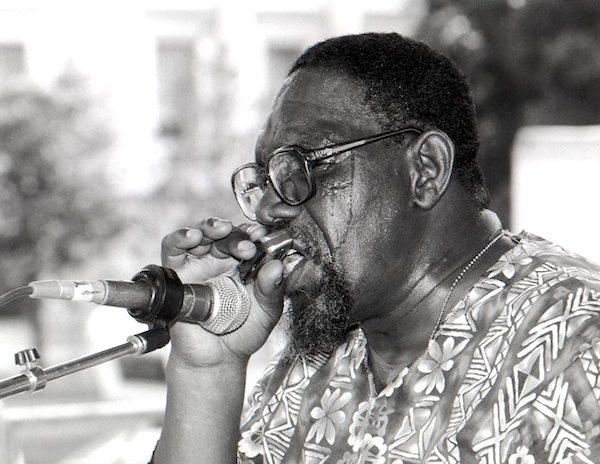Early Life and Background
Saunders Terrell, famously known as Sonny Terry, was born on October 24, 1911, in Greensboro, Georgia. Raised in a musical family, he was introduced to the harmonica at an early age. However, his life took a dramatic turn when he suffered two separate accidents in his youth, leading to near-total blindness. Despite this hardship, he turned to music as both solace and livelihood, mastering the harmonica with an unmistakable style that would later define his career.
Developing His Unique Sound
Terry’s harmonica technique was highly distinctive, incorporating whoops, hollers, and rhythmic effects that set him apart from other blues musicians of his time. His sound was deeply rooted in the Piedmont blues tradition, characterized by a rolling, melodic style. His ability to mimic train whistles, animal sounds, and even human cries added a unique theatricality to his performances, making him one of the most recognizable harmonica players in blues history.
Musical Partnerships and Career Growth
In the late 1930s, Sonny Terry began performing with guitarist Blind Boy Fuller, a leading figure in the Piedmont blues scene. Their collaboration brought Terry into the national spotlight, and following Fuller’s death in 1941, he formed a long-lasting partnership with guitarist and singer Brownie McGhee. Together, they became one of the most famous blues duos, recording extensively and performing across the United States and Europe.
Their music, a fusion of blues, folk, and gospel influences, resonated with audiences beyond the traditional blues community. They recorded for major labels, including Okeh, Folkways, and Atlantic Records, and were instrumental in bringing blues to mainstream audiences.
Influence and Contributions
Sonny Terry’s influence extended beyond recordings and concerts. He was actively involved in the American folk revival of the 1950s and 1960s, performing alongside artists like Lead Belly, Woody Guthrie, and Pete Seeger. His harmonica playing featured prominently in folk festivals, and he even made appearances on Broadway in plays such as Finian’s Rainbow and Cat on a Hot Tin Roof.
Terry’s music also found its way into film and television, contributing to the score of The Color Purple and inspiring countless musicians. His energetic performances, characterized by joyful exuberance and deep emotional expression, solidified his legacy in blues and folk music.
Later Years and Legacy
Sonny Terry continued performing well into his later years, often collaborating with McGhee and other blues musicians. Though their partnership had its ups and downs, their contributions to blues music remain unparalleled. Terry was awarded a National Heritage Fellowship by the National Endowment for the Arts in 1982, recognizing his contribution to American music.
Sonny Terry passed away on March 11, 1986, leaving behind an indelible mark on the blues world. His harmonica mastery influenced generations of musicians, from blues players to rock artists. Today, he remains a celebrated figure, remembered for his vibrant performances and groundbreaking style.
Conclusion
Sonny Terry’s life and music embody the spirit of resilience and artistic brilliance. His ability to transform the harmonica into an instrument of raw emotion and storytelling set him apart as a true pioneer of the blues. Through his recordings, collaborations, and performances, his legacy continues to inspire and captivate music lovers worldwide.


No responses yet